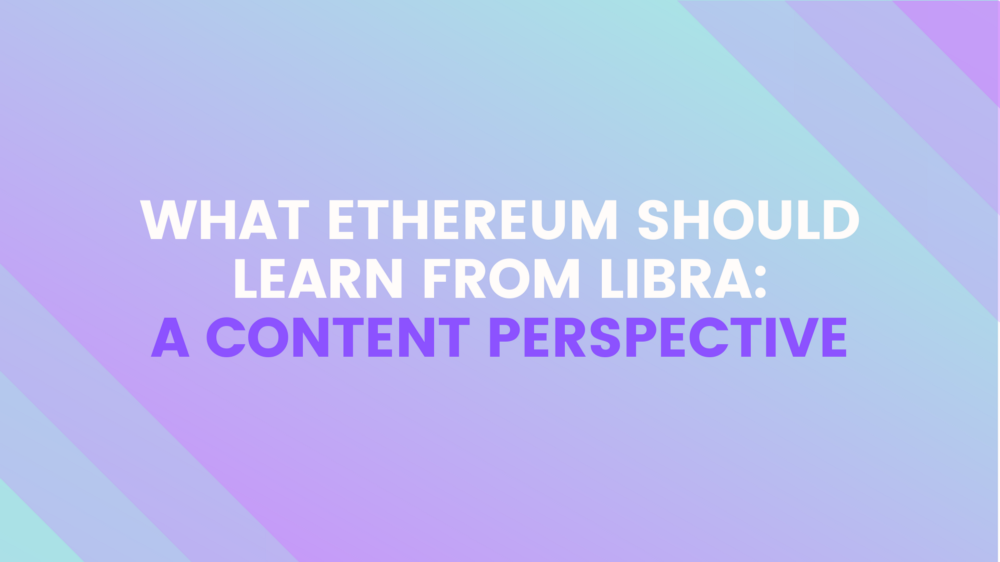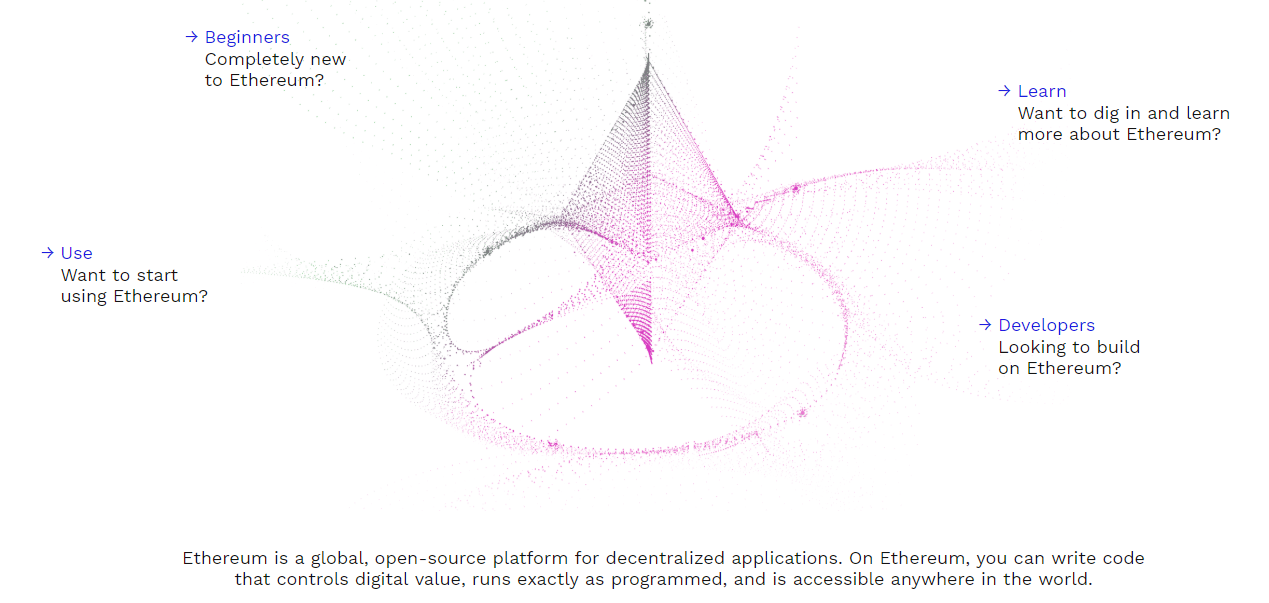What can Ethereum learn from Libra?

On June 18, 2019, the official Libra website of Facebook's global cryptocurrency project was officially launched and a white paper was released. Like many workers in the Ethereum ecosystem, I am not happy with this news, but I think Libra is indeed an object worth watching. Knowing ourselves and knowing each other can only be a battle.
When I was browsing libra.org, some things really surprised me. Of course, Libra doesn't have a perfect content design, but its highlight is what most blockchain companies often overlook: it uses a language that ordinary people can understand. The center of Libra's talk is "people," not "computer protocols," and mentions how it affects our lives. And I think this is what we can and should do, and we should follow suit in the decentralized community. This may be the only opportunity for us to implement Ethereum's large-scale application.
So what should we learn from it?
- The US Treasury Secretary said that Libra’s timing was “uncomfortable” and the encryption community saw a positive side.
- Bitcoin's soaring population: the mining giant ushered in the spring exchange to die in the cold winter
- What will be the martyrdom of David Marcus at the upcoming two Libra hearings?
Yangchun white snow? To be grounded!
After browsing the entire Libra website, you don't necessarily know it's a blockchain product (before reading the white paper), which is what I like the most. If you're simply browsing the site, one might think that Libra is a new way to make money transfer transactions anywhere in the world. Or it can be as easy as sending a text message.
This is a tangible benefit and tells users what they can do with Libra and what value Libra has for users.
Perhaps only this concept is not convincing, users need to understand. Regarding how Libra will deliver on its promises, this site is not fully identifiable (and therefore needs to read Libra's white paper), it just claims that global transactions should be "as simple as sending text messages." However, this provides users with an imaginative space, a vision that makes life easier.
After browsing the entire Libra website, you don't necessarily know it's a blockchain product (before reading the white paper), which is what I like the most. If you're simply browsing the site, one might think that Libra is a new way to make money transfer transactions anywhere in the world. Or it can be as easy as sending a text message.
This is a tangible benefit and tells users what they can do with Libra and what value Libra has for users.
Perhaps only this concept is not convincing, users need to understand. Regarding how Libra will deliver on its promises, this site is not fully identifiable (and therefore needs to read Libra's white paper), it just claims that global transactions should be "as simple as sending text messages." However, this provides users with an imaginative space, a vision that makes life easier.
Technical principle? product value!
Some of us may come up with the idea, “Does this undermine the concept of product technology?” So, let’s think about it, we talk about the frequency of network technology protocols such as TCP/IP or HMTL on the relevant websites every day. How high?
Undoubtedly, the value of blockchain technology is not understood by most people, so we need to talk more about its value to our real life.
In order not to create an understanding gap, Facebook did not choose to describe itself as follows:
" Facebook Is a use The social network of the PHP language , using the HipHop compiler, will still PHP Convert to C ++ ' source converter ' ' .
This example is indeed more extreme, but it illustrates how ambiguous the product definition is in the context of technical jargon.
Let's take another example. In fact, most people don't know how cloud storage technology works, but just understand the benefits it brings. If cloud technology means that users can access their stored files from any device from anywhere, blockchain technology means that users can safely and quickly transfer money to any area of the world, track the source of goods, and not share personal data. Provide credentials for the user, or have a unique collection.
I am not saying that we need to plug all the value of the blockchain to the user. If you are a dApp developer, we need to tailor the product story, but the content should not be too embarrassing, because the reason users use dApp may be very different from the reason we started using blockchain technology.
Just mentioning the “blockchain” is not enough for most people to take your life from a busy life. This may apply in 2017, after all, investors at the time were eager for blockchain companies. But now in 2019, our user base is not a venture capital firm that wants to use the latest technology to generate revenue. They are ordinary people who want to use our products and services to improve their lives, and we can provide a more costly A lifestyle that is easier and easier to work with.
Only developers in the eyes? Also have an ordinary audience!
We know that there are still a lot of project content in the Ethereum stack that still only needs to target the developer community. For example, a product like Infura does not need to pay attention to the design recommendations of this article. However, there are many product content designs in the Ethereum ecosystem that should cater to a wider audience. Ambitious products should strive to win every user (even non-cryptocurrency holders) from their central competitors. Such products are such as DeFi (Decentralized Finance), collectibles, wallets, games, and the like.
Libra is aimed at both developers and non-developers. While gaining user rights, you can also participate in discussing more technical content such as scalability, programming, and so on. This is in stark contrast to ethereum.org.

Source eethereum.org
We can see that the welcome interface of ethereum.org directly assumes that the user role is the developer:
“Ethereum is a global open source platform for decentralized applications. At Ethereum, you can write code that controls the value of your digitalization. The program runs exactly as programmed and can be accessed globally.”
If the user who clicked in is a non-technical person, this introduction has no meaning. What if the user is not a developer? There is no real concept for what Ethereum can do or what new meaning Ethereum has.
As the official website of Ethereum, it may also be a curious reader to enter the first stop of the Ethereum world through search engines. Maybe we should make the introduction of Ethereum more easy to understand? I know that the main purpose of Ethereum.org may be to attract more developers. However, when developers build, they also need to combine the needs of users, so we need Ethereum users who are helpful to the product team. We need to mention the goals that can be achieved with this technology to motivate potential users, which in turn provides momentum for expanding the community and building more products.
Conclusion
Libra described himself as “redefining the currency”, “improving life” and “a simple global monetary and financial infrastructure”. It may not be clear enough, but it is enough for the user to stop and learn more about it. Even with the most widely used Ethereum dApp sites, these phrases are awesome: your "nodes", "protocols", "smart contracts", "keys", "hash", "distributed networks", " Sign blockchain trading" and so on.
It is these terms that keep users out of the door because trying to understand the technical thresholds that require a certain level of height. This makes the seemingly “unpredictable” Ethereum product lose too much potential users we want to retain.
Imagine if you weren't on the DeFi dApp, where many terms were rampant, the number of traders and investors who could become DeFi users would be much more than it is now. They don't care if their cryptocurrencies are "locked in smart contracts", they care about whether it can appreciate over time to see the expected return. At this point, dharma.io and their "wonderful internet currency" are very user-friendly, but there are only a handful of such companies.
For the time being, most Ethereum products are only user-friendly to a small number of users with technical background knowledge, such as users who are familiar with basic concepts, master blockchain and Web3 technology, and this is a user who does not have a certain level of technical knowledge. Excluded. To develop this type of user base and enhance its products, we must start with readable content, popular explanations, and friendly communication. This is the goal of good content design, and I hope to see more of this in the next phase of ecosystem development.
If we start to target content to a broader, lower-tech audience and pull out the complexity of the blockchain, then opportunities for growth and widespread adoption will follow.
I say this not because of Libra's recognition. It's just that this does provide some lessons for the decentralized community on how to promote the product.
So let's reduce the use of technical terms, put non-technical audiences in our hearts, and sing our value stories to see how our products compete with Libra, a strong user base and strong background.
Original link: https://media.consensys.net/what-ethereum-should-learn-from-libra-a-content-perspective-63428ab5ccef
Reprinted please specify: ECN Ethereum China
WeChat public number: ETH Chinese network
We will continue to update Blocking; if you have any questions or suggestions, please contact us!
Was this article helpful?
93 out of 132 found this helpful
Related articles
- BTC fluctuates at a high level, and the short-term market is exhausted.
- Bai Shuo commented that the face of the letter is blocked: to prevent financial risks, but also to retain innovative living water
- Facebook hearing testimony exposure: Libra will not be launched rashly until regulatory concerns are removed
- FB blockchain leader Marcus: Libra will not compete with sovereign currency
- Completely blocked! The most stringent bill in the history of India reveals that the "digital rupee" is emerging
- Popular Science | Bandwidth and Blockchain: How Developers Minimize Overhead
- Trump slams Bitcoin and Libra; the US Congress intends to ban technology giants from digital assets





